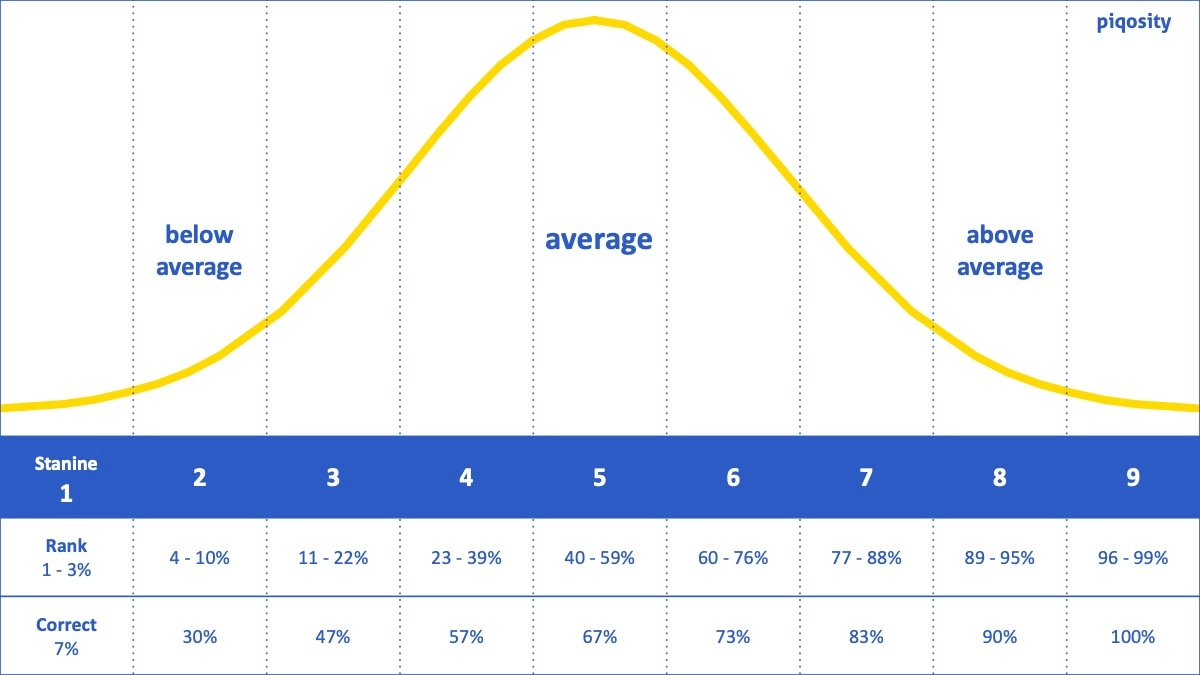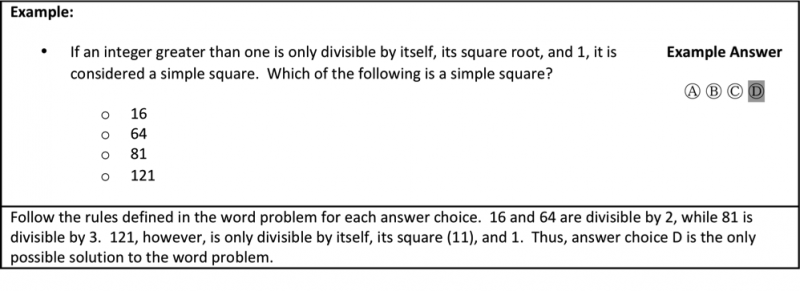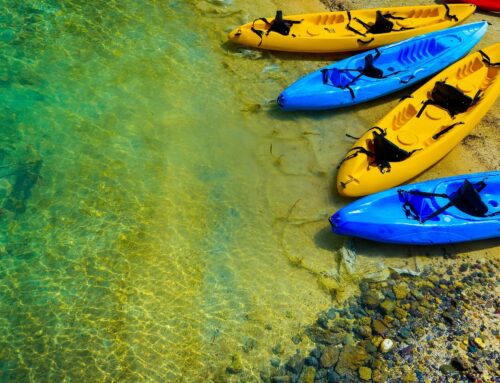During the 2023-2024 fall testing cycle, nearly 300 Houston-area students prepared for their ISEE and SSAT private school admissions tests with General Academic. While every child’s situation is unique and we’re unable to guarantee specific results, we are nonetheless delighted to see such excellent outcomes from this year’s cohort. In particular, our students taking the ISEE Upper Level for applying to 9th grade did exceptionally well. On average, our ISEE Upper Level students boosted their composite ISEE scores by 1.3 stanines or just over 20 percentile ranks.
What is the ISEE test?
The ISEE Upper Level is a peer-normed, standardized entrance exam required by most Houston-area private schools for admission. Most students take the test twice in both fall and winter prior to submitting their applications in January. The test contains 4 scored sections and 1 non-scored essay:
- Verbal Reasoning (VR) – 40 questions and 20 minutes
- Quantitative Reasoning (QR) – 37 questions and 35 minutes
- Reading Comprehension (RC) – 36 questions and 35 minutes
- Mathematics Achievement (MA) – 47 questions and 40 minutes
- Personal Essay – 1 prompt and 30 minutes
Students take the ISEE Upper Level to apply to high school (9th grade), the Middle Level for grades 7 & 8, and the Lower Level for grades 5 & 6. In Houston, the Upper Level is the most popular.
How is the ISEE test scored and what is a good score?
When you hear other parents discussing ISEE scores, they are usually referring to stanine scores. To understand a stanine score, take a normal curve which represents the testing population and divide it into 9 evenly sized slices. In general, a good ISEE score for an academically competitive school is a stanine score of 7, 8, or 9. Stanine scores of 4, 5, and 6 are considered average, and scores of 1, 2, and 3 are below average.
However, defining a “good score” really depends on several factors, including the schools to which you are applying. Very academically rigorous schools like St. John’s, Kinkaid, Strake, and St. Agnes generally prefer high scores like 7 and 8, while more broadly-focused schools like Episcopal, Emery/Weiner, and Houston Christian are more tolerant of average scores like 5 and 6.
Like most standardized tests including the ACT and SAT, the ISEE is a peer-normed test, which means that students are scored relative to each other.
Specifically, students will be scored relative to all students at their grade level who have taken the ISEE over the last three years. This is called the Norm Group. It does not include students in the same grade for the year your child takes the ISEE.
Verbal Reasoning – Strongest Section to Start
The Verbal Reasoning section (VR) is comprised of synonym and sentence completion questions. In practice, this section is mostly a test of a student’s vocabulary, which is generally built over time by continuously reading challenging material.
Verbal Reasoning is usually the section in which our students score highest to begin with, and this year was no exception, with an average starting score around the 60th percentile. Unsurprisingly, then, students generally saw the least improvement in VR out of the ISEE’s four sections, but those who started off below the 50th percentile saw decent gains of about 10 percentile ranks.
We’re always honing our recommended study strategies to help students learn productively both with their tutor and independently. One great way to help your student improve their Verbal Reasoning score is using flashcard lists like the ones on Piqosity.com, which we recommend using in tandem with tried-and-true strategies like keeping track of unfamiliar words encountered during practice, gaining familiarity with word parts (we break down the most common ones here), and studying words actively by using them in writing and conversation.
Given that building vocabulary is a long-term process, our other primary focus is how we can encourage our younger students to enjoy reading from an early age, such as by having them read great books known to improve vocabulary acquisition.
Quantitative Reasoning – Most Challenging Section
The Quantitative Reasoning section (QR) consists of math word problems and is by far the most challenging section of the ISEE for most Houston students.
In Quantitative Reasoning, our students showed a substantial 1.6 stanine rank improvement, equivalent to about 25 percentile ranks.
We attribute this improvement to the fact that tutors spend a significant amount of time both remediating math that a student should already know and strengthening the student’s understanding so that they’re better equipped to apply those basic skills to novel math questions. For advanced students, tutors will also cover material they have yet to see in school.
Reading Comprehension – Most Competitive Section, Biggest Score Gains
The Reading Comprehension section (RC) is composed of six, ~600 word passages followed by six questions each on topics like the main idea and the author’s purpose.
In Reading Comprehension, our students saw a tremendous improvement of 1.8 stanines or 27 percentile ranks on average, making it their most-improved area for the 2023-2024 cycle. Students who began below the 50th percentile saw even better gains of 2.1 stanines or 33 percentile ranks.
Reading Comprehension is the most competitive section of the ISEE in that most students taking this test come from educated family backgrounds, which exposes students to reading from an early age. As such, this educated norm group starts with higher scores, and students must maximize their accuracy in order to rank highly.
Mathematics Achievement – Longest Section with Second Biggest Gains
The Mathematics Achievement section (MA) is similar to Quantitative Reasoning in that it’s comprised of math word problems, but its questions focus on comparatively straightforward calculations. While it’s usually considered easier than QR, it requires test-taking endurance because of its status as the ISEE’s lengthiest section (47 questions, 40 minutes on the Upper Level ISEE) and its place near the end of an already long exam.
Our students saw an impressive 1.7 stanine improvement, or nearly 26 percentile ranks. Again, students who began below the 50th percentile fared even better with gains of 2 stanines or nearly 34 percentile ranks.
These big improvements in the math sections showcase our students’ hard work – with structured practice and concept review, they were well-equipped to tackle both familiar and recently learned concepts on test day.
Essay – Not Scored But Not Ignored
The Essay, which includes one personal prompt like, “Tell us about a time that you overcame a challenge,” is not scored but is sent directly to each school so that they can see an unadulterated sample of the student’s writing abilities under time constraints.
Since the essay is not scored, we prepare for this section last and only if time allows. Key strategies include ensuring the student knows how to structure a basic essay, identify what the prompt is asking, and respond in such a way that showcases their personality with concrete examples.
When to Start Preparing for the ISEE
In high-stakes standardized testing, the biggest constraints are always the student’s baseline abilities and time. Therefore, we recommend that students start by taking a diagnostic test the summer before their applications are due the following January.
Most of our students meet for 1 to 1.5 hours a week until they achieve their desired scores on either of two test dates in fall (usually October or November) or winter (late December or early January). Click here to see our full analysis of the ISEE prep timeline so you know what to expect.
Summary of Findings:
- This year, our students saw the most improvement in the competitive Reading Comprehension section, with average gains topping 1.8 stanines or 27 percentile ranks.
- The two math sections of Quantitative Reasoning and Mathematics Achievement are generally the hardest two sections on the exam, but our students showed impressive improvement of about 25 percentile ranks in each.
- Verbal Reasoning is where our students started with the highest scores, and therefore saw the least improvement. Of all the sections of the ISEE, VR performance is the most dependent on individual practice as well as skills and knowledge gained over a long period of time.
- It’s impossible to guarantee results as students are teenagers subject to multiple pressures beyond both their and our control including innate capabilities, hormones, outside studying, and even sickness and the weather.
We’re incredibly impressed with our tutors’ capabilities and our students’ hard work this testing cycle, and we’re thrilled that we were able to help them get into the schools of their dreams!
Learn More about General Academic’s ISEE Analysis, Products, and Services






